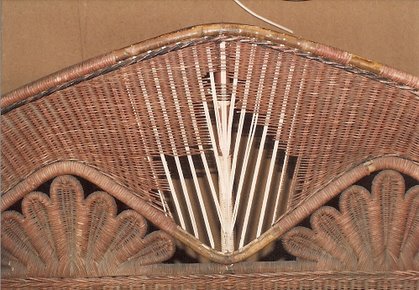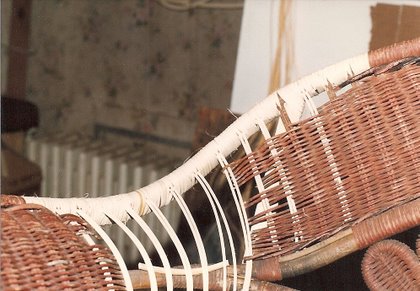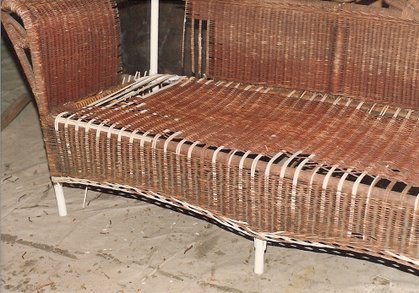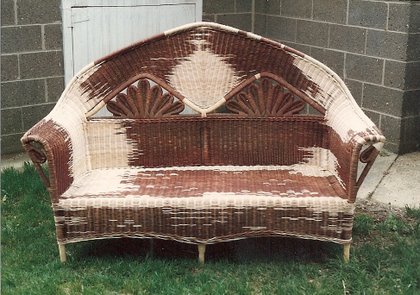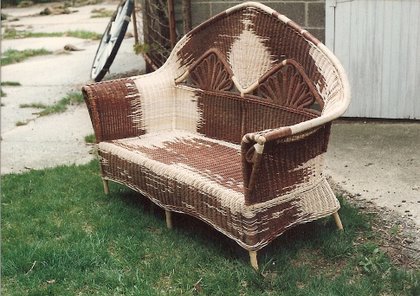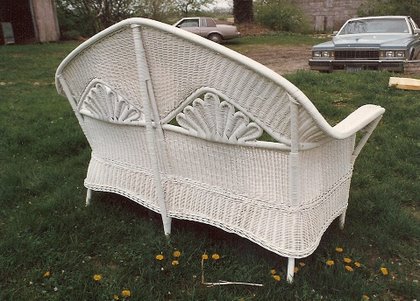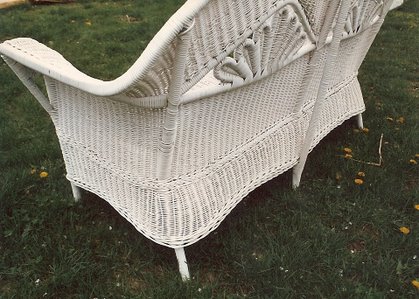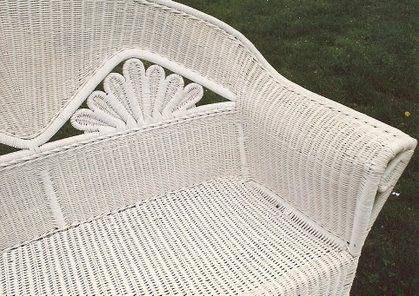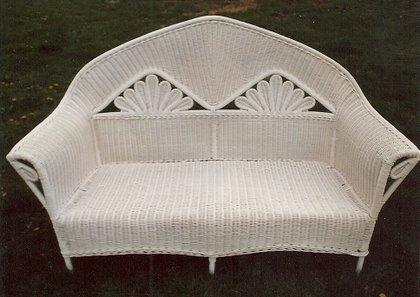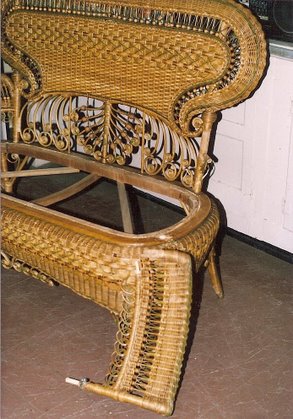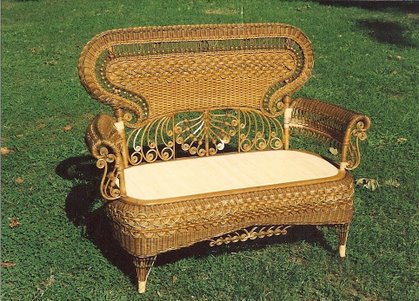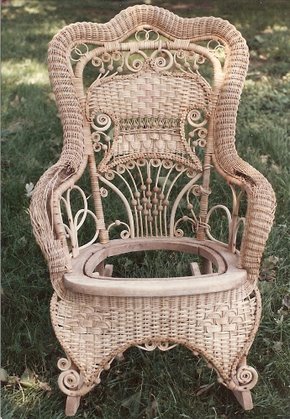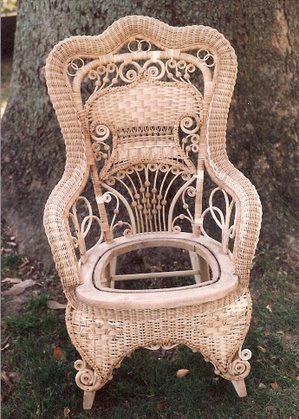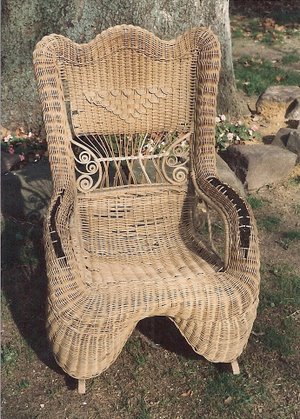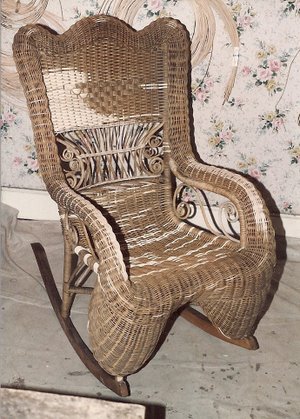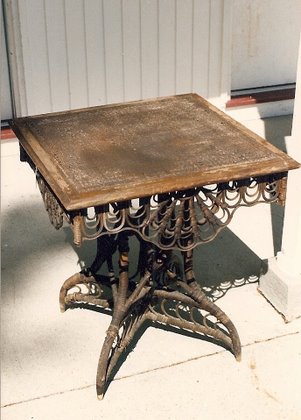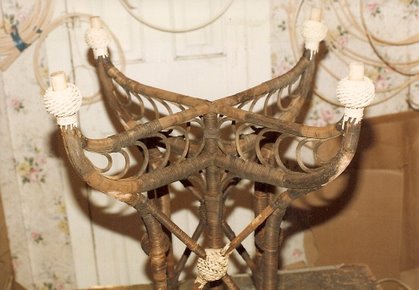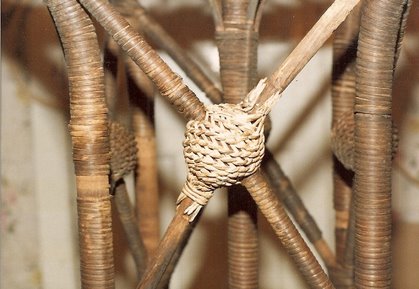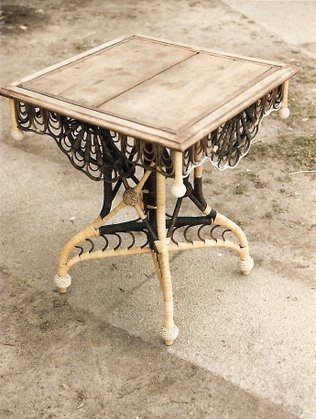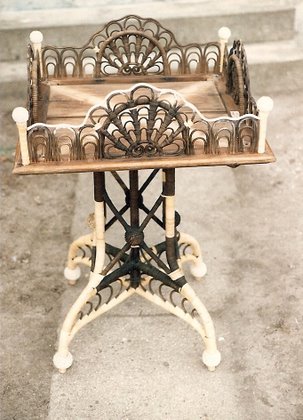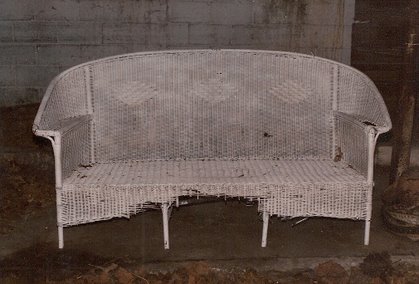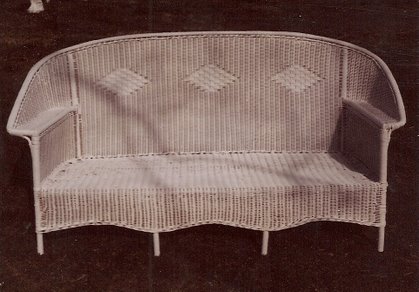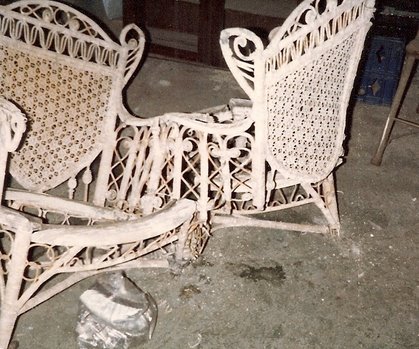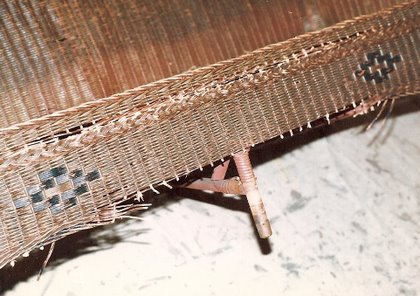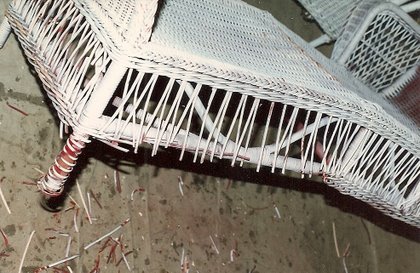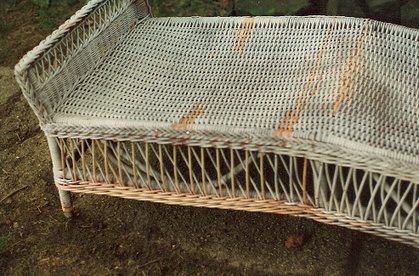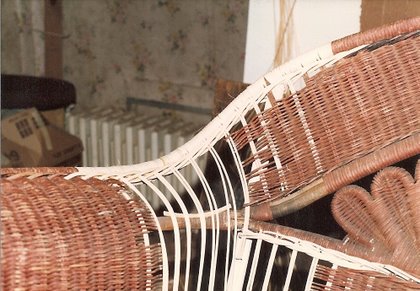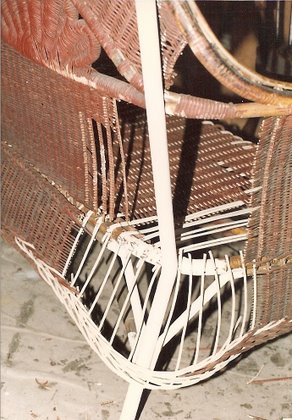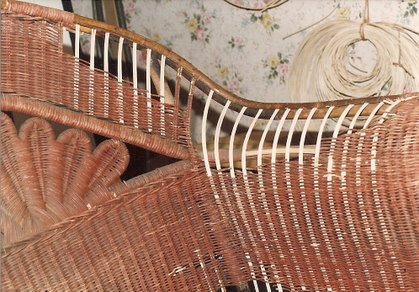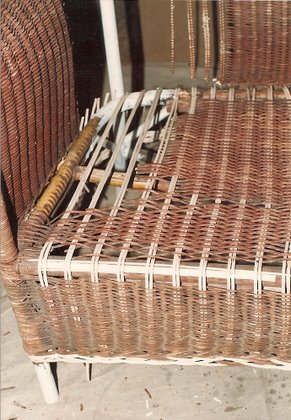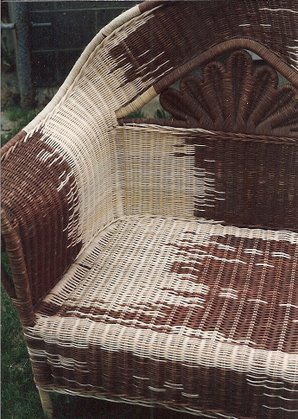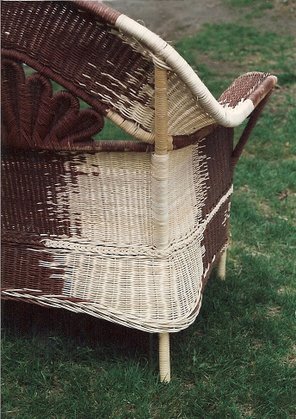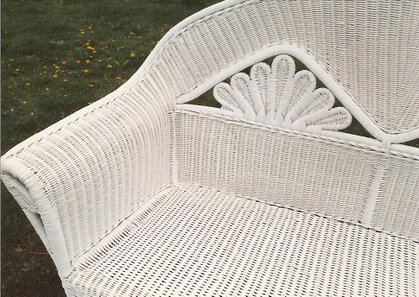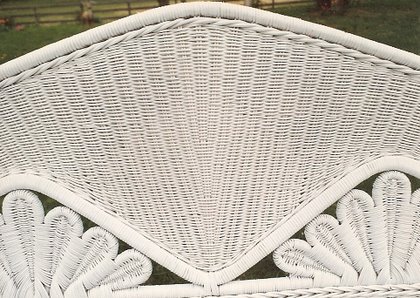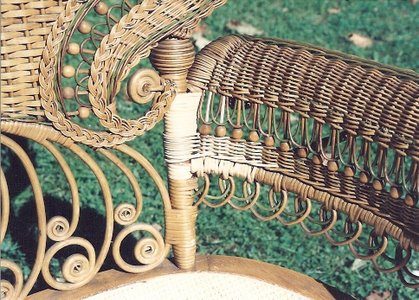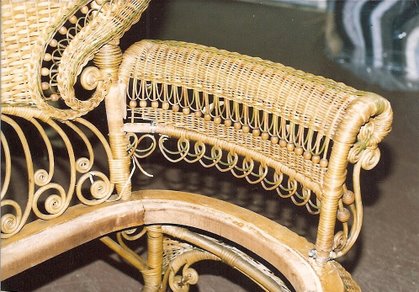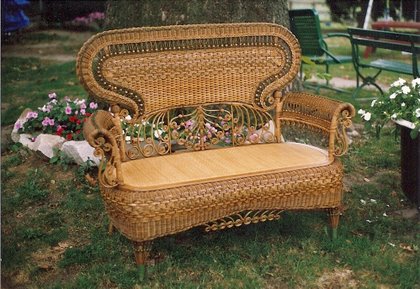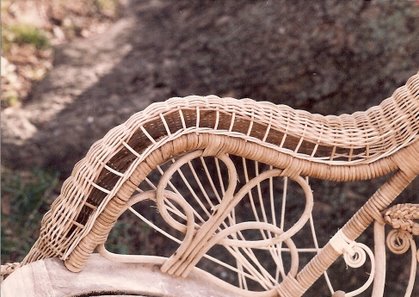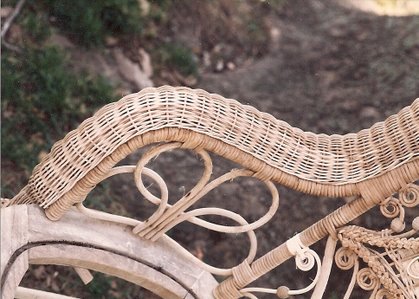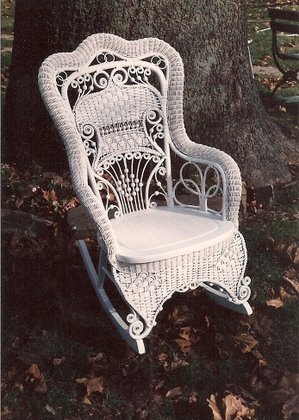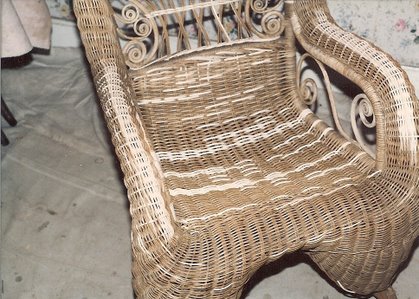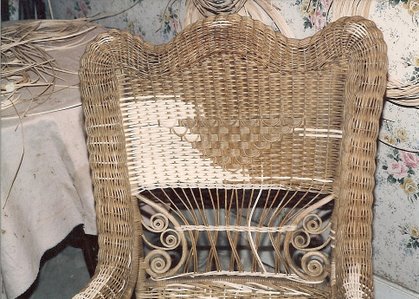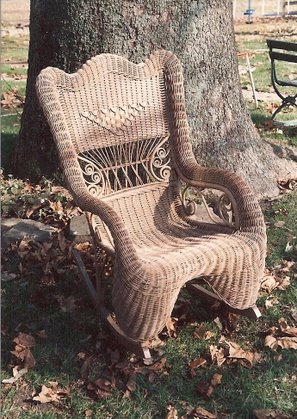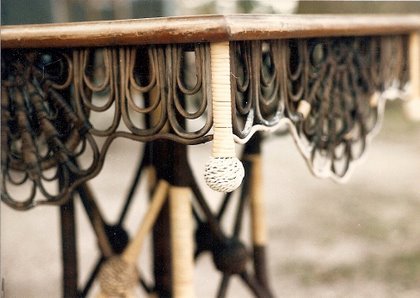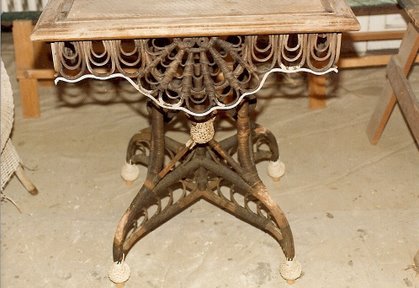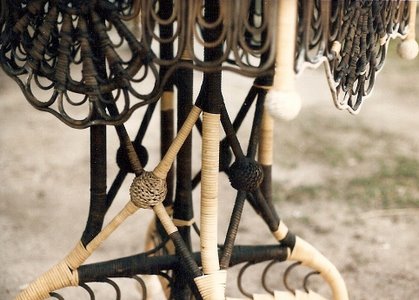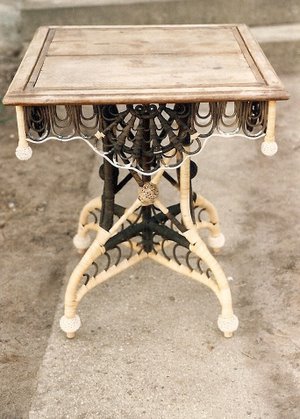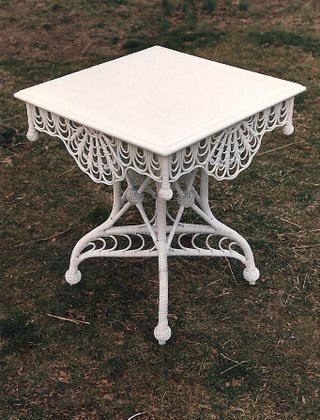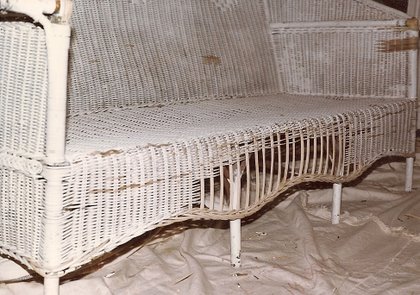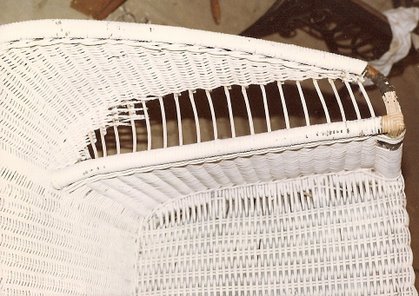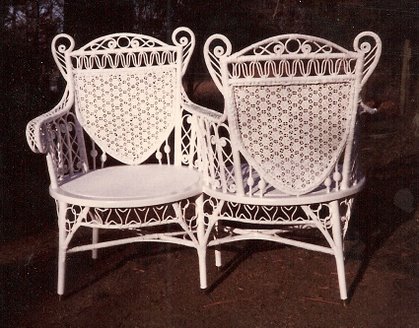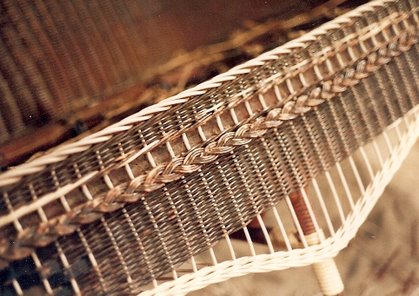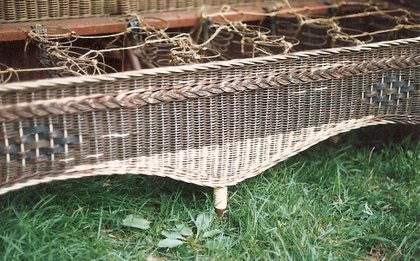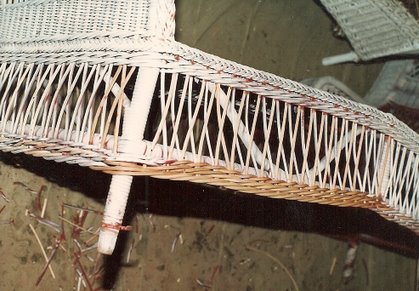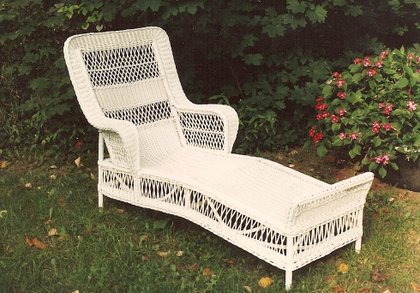The commitment to restore a piece of antique wicker furniture and achieve the desired result - a restoration that looks like an untouched antique is a very satisfying accomplishment. A good job can't be rushed. I spend time envisioning the repairs and the results I wish to achieve from beginning to end. There is a lot of technique and craftsmanship involved in wicker repair. Wickerwork may appear to be easy and straightforward. It is anything but straightforward. Every repair is different because each piece of wicker has different existing conditions to work with. As you can see in these photos, this is a very badly damaged, yet very desirable wicker sofa, circa 1920's. It is worth the time and effort to repair.
* First, there is major structural damage. Reconstruction of weak and damaged areas is the first step.
* Tightening up the frame is next.
* All of the weaving must be cut back in a staggered configuration to obtain optimum strength when re-weaving takes place.
* New spokes have to be run and secured. It takes a considerable amount of practice to get the spokes to have the perfect contour after the weaving is in place. Without the right contour and the correct number of rows of weaving, the patched area will not match up correctly and will have an inferior appearance.
* Before any wickerwork begins, the reeds for repairing must be carefully chosen. Different grades and qualities of reeds are available and it is very important to work with top quality reeds and handpick them for the job.
* Tying spokes into the edge and forming a smooth, tight, locked-in skirting is a work of art.
* Re-weaving all of the missing areas is a very time-consuming job. It takes much practice to achieve a smooth look and feel to the weaving. Locking-in weaving to create a strong and smooth woven repair takes attention to detail, including obtaining the proper contour and cutting all ends on an angle so that they blend with the weaving and don't stand out.
* The next step in restoration would be to use a torch and very carefully singe the fine hairs off the new reeds.
* All the new work is then shellacked to seal the reeds. The reeds can then be finely sanded to a very smooth finish.
* It would be wise to have wicker furniture restored by a professional. The task is more involved than most people would guess if top-notch results are to be achieved.
* There are multitudes of surfaces on wicker furniture, unlike wood furniture. The preparation for painting is very important and it involves lots of scraping, sanding, picking, and feathering of the old finish.
* Priming and painting are best done with a commercial air compressor and professional paint system.
* Sanding between thin coats is very important to achieve a smooth finish.
* There is a lot more work involved when restoring a piece with an original natural finish. Extreme care must be taken to pick choice reeds that will accept stain well for the repairs. Several hand-made stains will usually be necessary to blend new and old finishes. Incredible amounts of time go into restorations with natural finishes.
* When the restoration is complete, it should be virtually undetectable.
* Replacing curlicues, scrollwork design, and other fancywork is best left to the experts. I have created special jigs and devices to duplicate these embellishments. Duplicating curlicues and fitting them in place smoothly is not easy. Inferior reed and workmanship will cause the curlicues to kink and split back or be misshapen. The larger curlicues are very difficult to reproduce because it is hard to purchase large size reed that is supple enough to turn nicely.
* Fancy twist-wrapped balls that adorn so many Victorian pieces are a work of art to duplicate properly. They require up to 12 strands of reed to be woven tightly in a special pattern, fitted neatly around wooden balls, finials, and ball feet.
* Having a quality antique wicker piece restored by a professional is a very worthwhile investment. With proper restoration and care, these old wicker pieces will certainly be in service for another 100 years and retain their investment potential.




